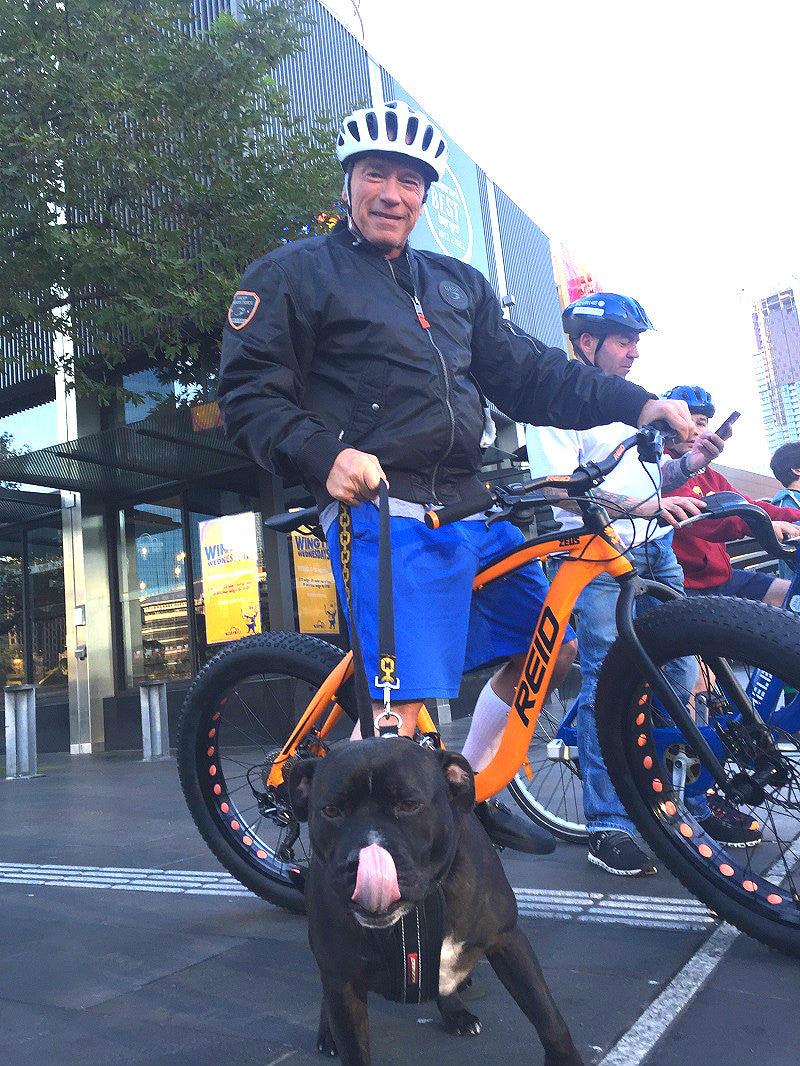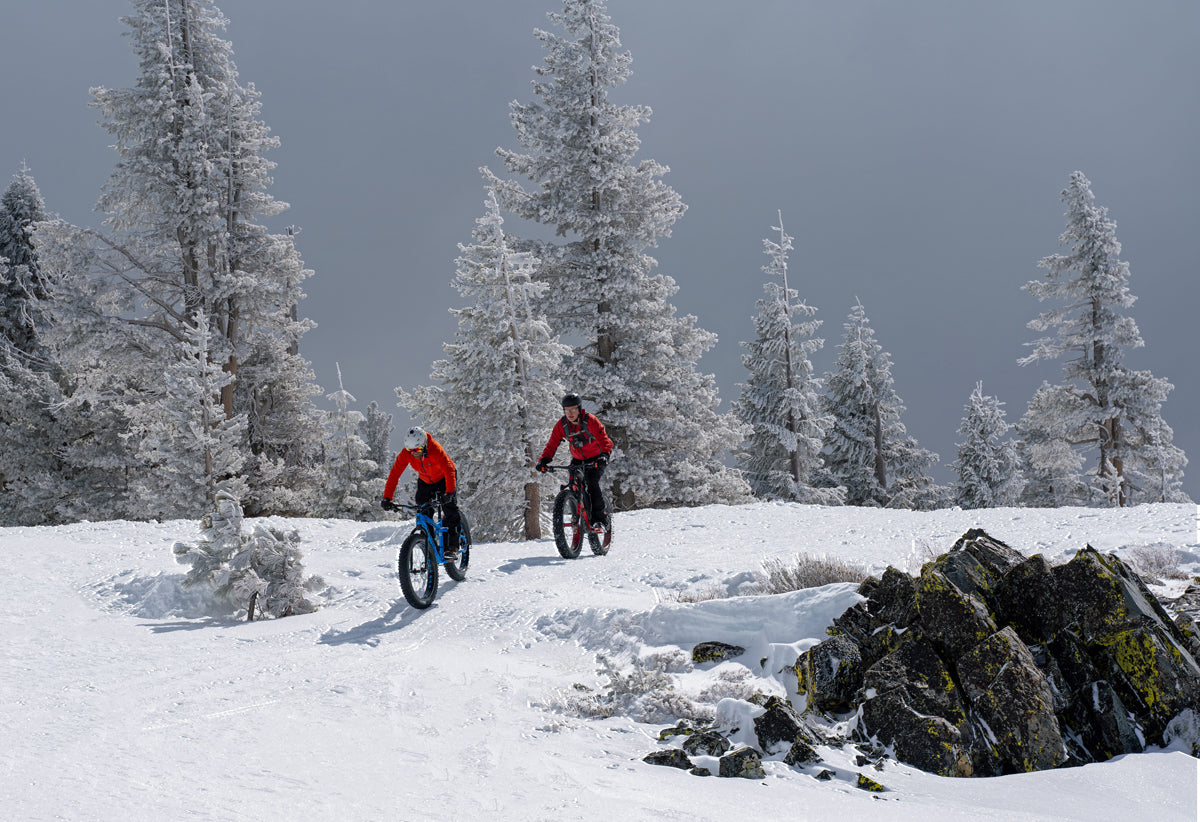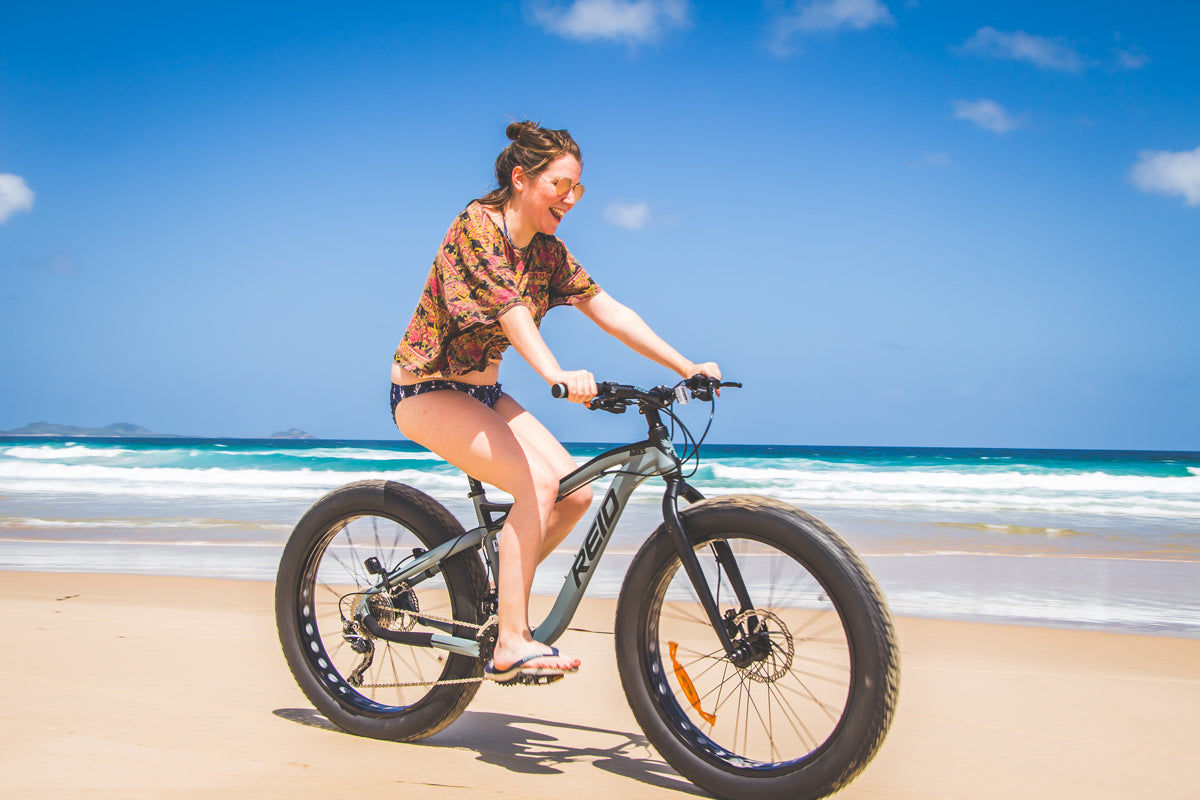What is a Fat bike?
Fat Bikes are big fun! They are essentially super-strong Mountain Bikes fitted with big, fat tyres (and the clearance to accommodate them) and made to ride over pretty much anything.
Originally designed for riding in the snow, Fat Bikes will eat up terrain you wouldn’t even attempt on a regular Mountain Bike. Float over deep sand, sticky mud, ice, snow or the sketchiest of rock gardens on these two-wheeled juggernauts.
It’s not all about flying down a mountain with your hair on fire though. The large, oversize 4” plus wheels also open up previously insurmountable terrain for epic adventure rides, and a new breed of extreme bike racing (a Reid Zeus recently competed in the Simpson Desert Bike Challenge over 570km from Purni Bore SA to Birdsville QLD).
Fat bikes are also perfect for wilderness bikepacking adventures where you might encounter sand, mud or slush as the large stable wheelbase provides the ability to carry large amounts of gear over unstable ground.

Fat Bike Wheels
Fat Bikes have several unique features which differentiate them from conventional mountain bikes. The first feature that catches your eye are the enormous 4” plus tyres which are capable of eating up and ploughing through all kinds of terrain.
Fat Bikes also feature extremely wide rims and oversized hubs in order to accommodate the larger tyres and tread. These wider rims add a large amount to the overall weight of the bike, so manufacturers will often drill out and remove any redundant material (hence the bubble effect on the inside of the rims).
This huge tread pattern allows a rider to remain high in soft terrain and prevent bogging. If the going gets really tough, just let some air out of the tyres and get cranking on the low gearing designed to keep you moving (they can run as low as 10 PSI).
Fat Bike Frames
At first glance, a Fat Bike frame looks like a standard mountain bike but there are several key unique features.
The most obvious is wheel clearance, with the rear triangle and front forks both modified to accommodate the large, wide wheels and tyres. The wider rear triangle and front forks mean that conventional rim brakes are not suitable to fit or stop the large rotating mass of the wheels, making extra powerful disc brakes a must.


Fat Bike Gearing
Generally Fat Bikes will run low gearing to keep the wheels moving over more technical terrain and sticky stuff like mud, snow and sand.
The low gearing also allows riders to easily pedal the large wheels and tyres and provide a relaxed and cruisy ride. These bikes are the mud pig 4x4s of the bike world so don’t expect a sportscar experience.
If you are after something with that extra wide tyre but a more nimble ride, check out our range of Plus bikes.
Fat Bike Care
Fat Bikes are made for hard riding. Because of their intended use, we use components equal to the task - super strong welds, sealed bearing bottom brackets coupled with tough alloy parts.
Even so, it is still a good idea to give your bike a wash with fresh water when you’re done – especially after riding on the beach.
Responsible Exploration
Respect the dunes! Coastal areas are sometimes classified as national parks so be sure to check on local rules when choosing where to ride.
When out bush, try to keep to designated trails in order to protect the surrounding vegetation. 4” tyres can churn the ground up and make a mess of things.
That said, there are plenty of environments around Australia where Fat Bike riders are welcome to cut loose. Search up some of the communities on your fave social networks for tips from like-minded Fattie riders.


